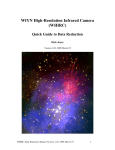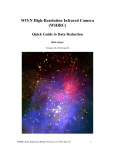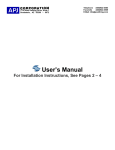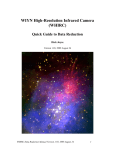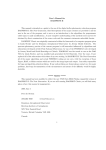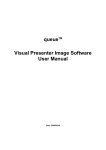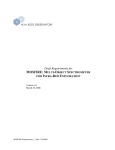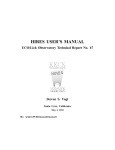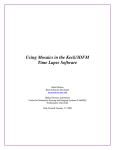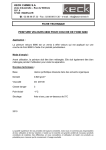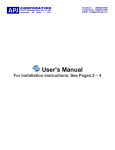Transcript
1 Problem 2: AY257 Spring 2005 In the directory /usr/local/www/bolte//AY257/PROBLEM2 are two sets of fits files. Some are Keck images in the open cluster NGC 2420 (n2420xxx.fits) and the rest are CTIO 1.5m images of the globular cluster NGC 288. The files have already been flat-fielded. At the class www site the programs DAOPHOT, ALLSTAR, DAOMATCH, DAOMASTER and PSFFIND can be found for linux machines (daophot linux.tar) and Macs running OS X 13.n (daophot osx.tar). Download whichever you need and extract them (tar xvf daophot whatever.tar). The DAOPHOT User’s Manual (daophot.ps) is in the data directory as are sample daophot.opt, photo.opt and allstar.opt files. You can also use the DAOPHOT in IRAF or IDL. Do each of the procedures below for either cluster. 1. Use DAOPHOT/ALLSTAR to find stars, make a psf for each frame and derive PSF-based magnitudes for all the stars. Refer to the class notes and the DAOPHOT User’s Manual for the specific procedures. 2. Use DAOMATCH and DAOMASTER to determine the positional offsets of the frames (for each filter) and to average the photometry in each filter. 3. Match stars (DAOMASTER) and plot up various versions of the color-magnitude diagram. Figure out ways to select out (1) the stars with the best photometry over the full magnitude range and (2) any possible photometric variables. Try CMDs for objects selected by CHI, color error, and radius from the center of the cluster. 4. Combine the frames in each filter using whatever IRAF tools work. The easiest is a combination of immatch, imshift and combine. If you want to explore geomatch, geotran and the other geo-stuff, do so. 5. Run DAOPHOT/ALLSTAR on the two master frames (one per filter) and make a color-magnitude diagram for the field. Compare it to your CMD from the averaged photometry from individual frames. 6. Write up your procedure and present the results (the CMDs) with discussion using the ApJ article format.
